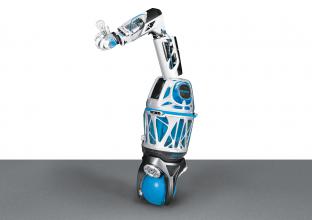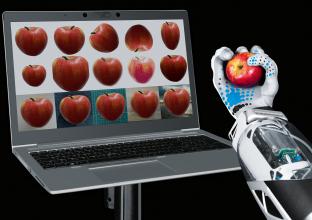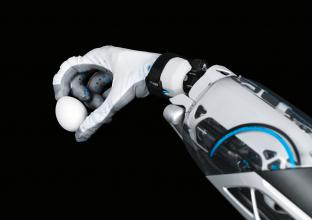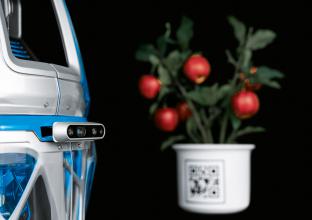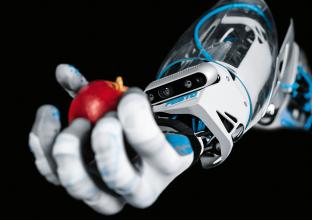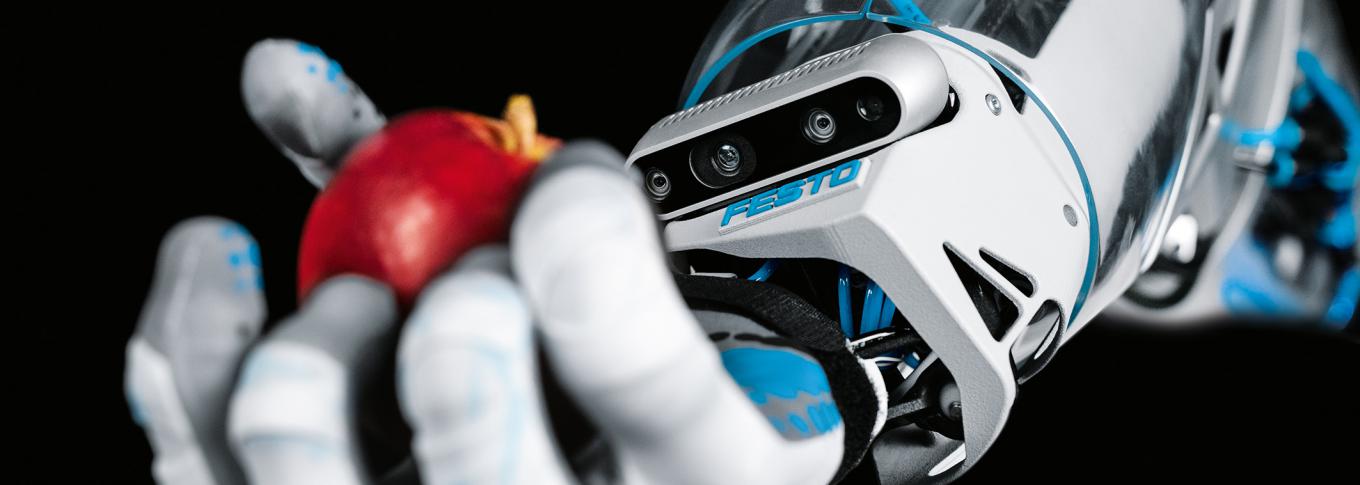
Festo gives the future of safe automation a hand
BionicSoftHand 2.0 uses a combination of compact valve technology, sensors, electronics and mechanical components to emulate the movements of a human hand.
Industrial change has accelerated, demanding a new level of interaction between people, machines and data. Within its Bionic Learning Network, Festo has been studying and developing safe automation systems to relieve people of monotonous or hazardous tasks. The BionicMobileAssistant is a prototype robot system that deploys artificial intelligence to move independently, identifying and gripping objects and adaptively working with humans.
The entire system has been developed in collaboration with ETH Zurich. It has a modular design consisting of three subsystems: a mobile robot, an electric robotic arm and a pneumatic gripper – the BionicSoftHand 2.0 – an earlier version of which was first presented by Festo in 2019. It uses a combination of compact valve technology, sensors, electronics and mechanical components integrated in the tightest of spaces in order to emulate the movements of a human hand.
BionicSoftHand 2.0 wears a tactile glove with force sensors on the fingertips, the palm and the outer sides of the robot hand. This allows it to sense the nature of the item to be gripped, and to adapt its gripping force accordingly – just as the human hand does. Thanks to a 3D-printed wrist with two degrees of freedom, the hand can also move both back and forth as well as to the left and to the right. This means that gripping smaller objects is now possible. In addition, the hand has a depth camera on the inside of the wrist so it can visually detect the objects to be gripped – even if these are partially obscured. The information is processed by a neural network, which has been trained in advance with the aid of data augmentation. Once the hand has been correctly trained, it uses the intelligence gathered to assess objects.
The system would be perfect for differentiating good product from bad product, or for use as a personal assistant: for example as a service robot helping in assembly or assisting workers in carrying out ergonomically monotonous tasks. It could also be used in environments where people cannot work because of hazards or restricted accessibility. This includes maintenance or repair work, data measurements or visual inspections. It is also possible to imagine mobile robots carrying out tasks in areas where there is an increased risk of infection: delivering medicines to hospital patients, supporting the delivery of care in old people’s homes, or waving ultralight sterilising wands within wards.
费斯托 (Festo)是一家全球性的独立的家族企业,总部位于德国埃斯林根。自成立以来,Festo在工业自动化技术和技术教育方面制定标准,从而为环境、经济和社会的可持续发展做出贡献。公司为超过35个行业的30万家工厂和过程自动化客户提供气动和电驱动自动化技术解决方案,其中生命科学和实验室自动化业务受到越来越多的关注。Festo产品和服务遍布176个国家。2024年,费斯托在全球61个国家的250多个分支机构拥有约20600名员工,实现销售额34.5亿欧元。每年约8%的销售额用于研发。在这家学习型企业,1.5%的销售额用于基础和进一步培训。Festo 教学培训 (Didactic SE) 是全球领先的技术教育和培训供应商,为全球客户提供工业环境中全面的数字化和常规学习解决方案。

